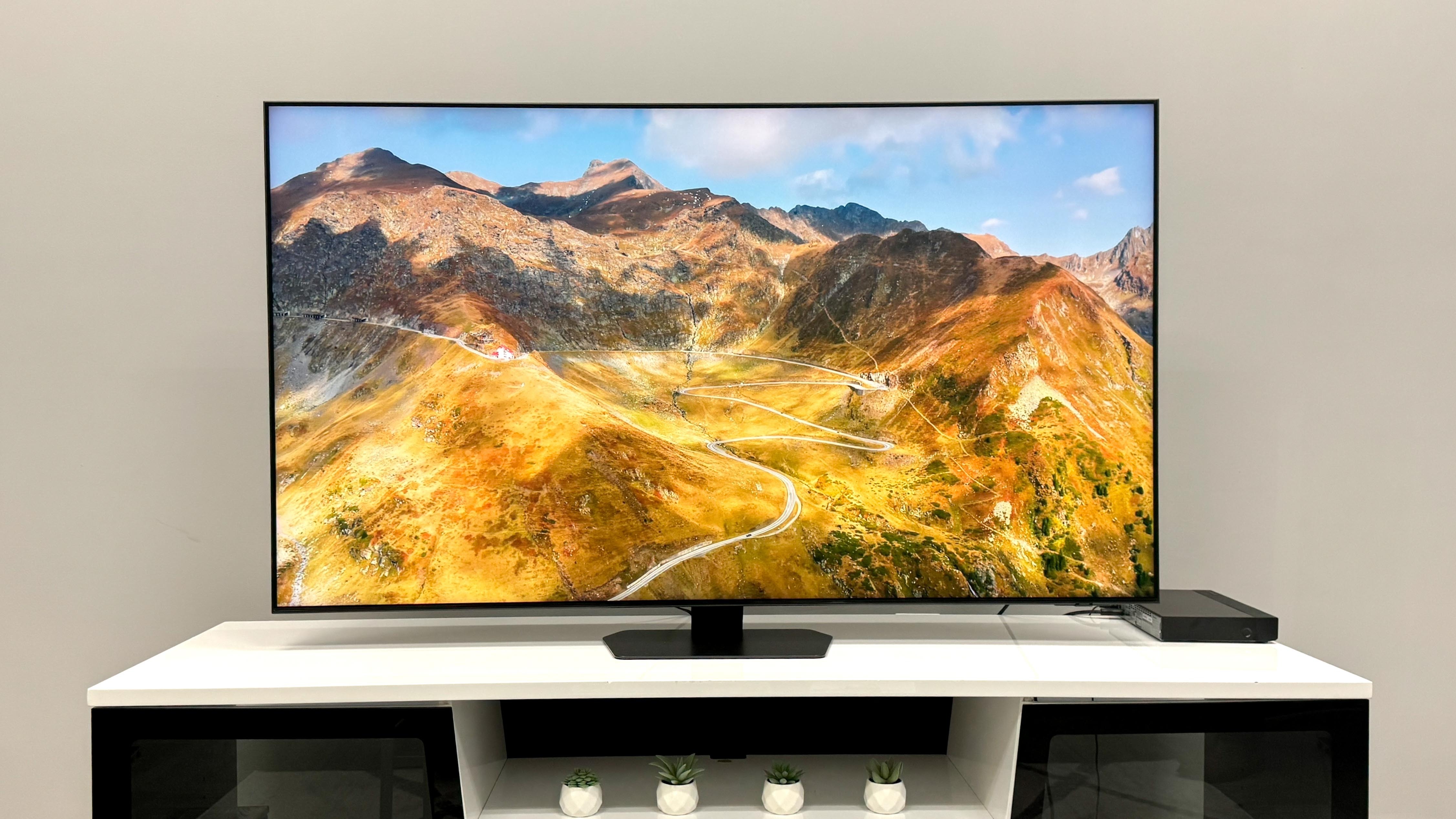
The annual tech cycle is grueling, both as a consumer and, I assume, as a manufacturer. As a TV maker, each year you’ve got to find some way to make an incremental improvement on last year’s product which, by most accounts, was already very good.
Such was the case for last year’s Samsung QN90C — a top entry in our list of the best TVs that now costs $1,599 — and that puts the new Samsung QN90D, the 2024 model from Samsung with a list price of $2,699, in a tough position.
It's a great TV, and it could very well land on our list of best TVs of the year, but because the Samsung QN90D shares a lot of the same specs with the QN90C that’s going to put a lot of TV buyers in a tricky spot. It means you'll have to decide between last year’s now very affordable QN90C and the incrementally better, but much more expensive QN90D.
Which should you buy? We recently had a chance to test the Samsung QN90D Neo QLED 4K before launch and have all the test data to help you make up your mind.
Samsung QN90D Test Data
| Row 0 - Cell 0 | Samsung QN90D | Samsung QN90C QLED | LG C3 OLED | Hisense U8K |
| Price for 65-inch screen size | $2,699 | $1,599 | $1,599 | $999 |
| SDR Brightness (10%, in nits) | 314.1757 | 794.8119 | 518.9015 | 1536.5366 |
| Delta-E (lower is better) | 2.1852 | 2.2 | 1.3908 | 4.4614 |
| Rec. 709 Gamut Coverage (%) | 99.49 | 99.77 | 133.59 | 99.8301 |
| HDR Brightness (10%, in nits) | 2146.12 | 1987.34 | 819.91 | 1788.31 |
| UHDA-P3 Gamut Coverage (%) | 94.4 | 95.81 | 98.98 | 97.12 |
| Rec. 2020 Gamut Coverage (%) | 71.76 | 77.15 | 73.77 | 80.41 |
Samsung QN90D: How good is it?
Although the data looks a bit bleak in comparison to other models, in-person the Samsung QN90D looks every bit as beautiful as last year's QN90C. Unsurprisingly, all the HDR content we saw blew us away on brightness and colors looked accurate in Filmmaker mode, our primary testing mode.
Compared to the Hisense U8K, our top TV from last year, I did find the colors to be a little less saturated overall (an observation supported by the QN90D's lackluster BT2020 color gamut saturation number) and SDR content looked less bright than I'd like.
Unless you have them right next to each other, it'd be tough to see a difference between the two screens.
Here's the tricky part, though: In terms of sheer, raw data, there's not a huge difference between the Samsung QN90D and QN90C. Outside of the low SDR brightness (which could easily just have been an unintended symptom of testing in Filmmaker mode), all of the data points are within a 5-10% margin of difference. Unless you have them right next to each other, it'd be tough to see a difference between the two screens.
Sign up to get the BEST of Tom's Guide direct to your inbox.
Get instant access to breaking news, the hottest reviews, great deals and helpful tips.
Where you might see a difference, and where the Samsung QN90D makes the case for its higher sticker price, is that it uses the new NQ4 AI Gen2 Processor that uses multiple neural networks to upscale content on an object-by-object basis. Again, this is going to be tough to see unless you have last year and this year's QN90 next to one another, but it's one differentiating factor between the two.
Outlook: A good TV in a very crowded space
While the test data didn't shatter any records, the Samsung QN90D performed pretty well across the board and it looked great when we saw it in action. But is it going to be worth $2,699 for a 65-inch screen when you can get the already-good Samsung QN90C for over $1,000 less? In my opinion, probably not.
As good as the QN90D is, it's arriving at a time when there are so many other great TVs for significantly less money. Yes, those TVs lack the NQ4 AI Gen2 Processor that will undoubtedly make upscaled content look better on the QN90D, but that's a small sacrifice to make for $1,000 in savings.
We'll need to spend more time with the QN90D before we draw any final conclusions — the sum of our experience with the TV only comes from a short, two-hour session after all — so stay tuned for our final review soon. Until then, don't sleep on the Samsung QN90C. It's a year old, but according to the test data, it's still holding on strong in 2024.

Nick Pino heads up the TV and AV verticals at Tom's Guide and covers everything from OLED TVs to the latest wireless headphones. He was formerly the Senior Editor, TV and AV at TechRadar (Tom's Guide's sister site) and has previously written for GamesRadar, Official Xbox Magazine, PC Gamer and other outlets over the last decade. Not sure which TV you should buy? Drop him an email or tweet him on Twitter and he can help you out.
